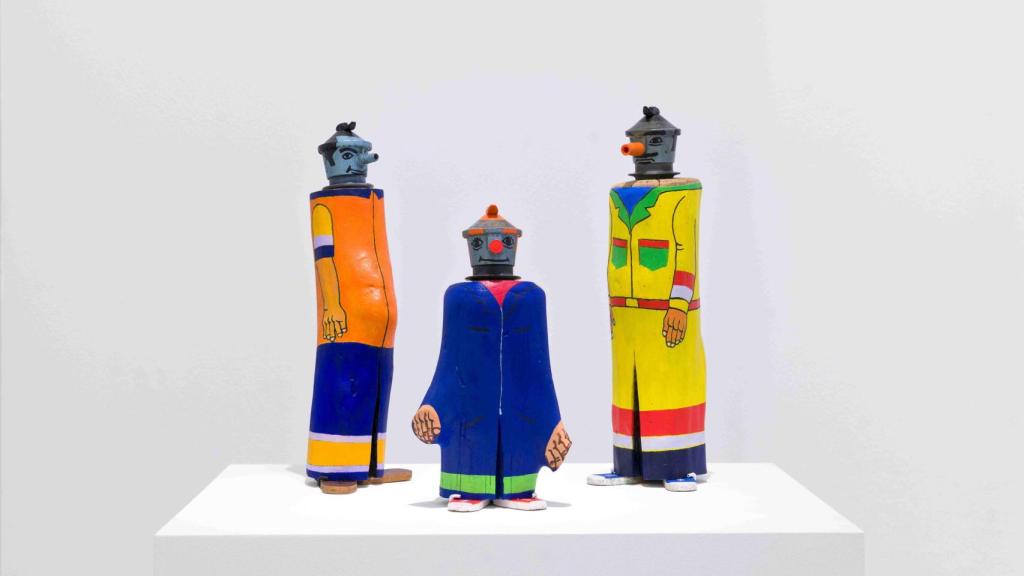Full of tenderness and rigor, an intelligent rereading of the classics and with a successful montage that allows the almost 150 pieces that make up the exhibition to shine, A retrospective by Alfredo Alcain (Madrid, 1936), at Alcalá 31 is, without a doubt, one of the best proposals of the season.
Not only does he reinterpret the still life or the landscape in an impressionist, cubist, pop, geometric or minimal key, but he declines them from his own way of doing things, which he refines until they become natural geometries, without imposing anything.
Alcain arrives at abstract art by himself, as a natural evolution of his writing that he reinterprets again and again – hence his tributes to Giorgio Morandi on the first floor of the room. His insistence for decades dilutes the pictorial motif until it becomes networks or patterns on the canvas.
This exhibition arrives late, but on time. The discreet career of this traditional painter – despite having received the National Prize for Plastic Arts (2003) and the Tomás Francisco Prieto Prize (2010) – has contributed to him unfairly going unnoticed.
His wonderful use of color – radiant –, his irony hidden among the domestic and his approach to the history of Spain from a biographical point of view have forged an unequivocal style. This is how they illustrate it Exploded self-portrait1975-2016, or the iconic Self-portrait in the course of time2014, in which he compartmentalizes objects and photographs of himself, painting his date of birth as if it were the date of his death (D. Alfredo Alcain Partearroyo died in Madrid on August 24, 1936. RIP ).
Alfredo Alcain, ‘The yellow hairdresser’, 1967. Photo: maría meseguer / Alfredo Alcain, VEGAP, Madrid 2025
As the famous critic Simón Marchán Fiz brilliantly described it in 1966, Alcain is “a residual realities detective“, also a magician of small things. His paintings of old businesses – hairdressers, dairy shops or haberdasheries – transport us to that Spain of the neighborhood store, where the shop windows amateurs They reflected a simple order, of socks and panties, of balance and corner, through which the artist walks like a stroller (Blue showcase of jerseys and socks1974).
Also in the fascinating piece The wool showcase1968, where the color and geometry of the order of, precisely that, a wool showcase, becomes an exquisite display of geometry and lyricism.
In his painting, a wool showcase becomes an exquisite display of geometry and lyricism.
At 89 years old, Alcain enters Alcalá 31 with irrefutable solvency. The curator, Mariano Navarro, with the editing by Andrés Mengs, makes a wonderful selection of pieces breathe that opens with to the painting1977, a piece that synthesizes the tension between figuration and abstraction.
From this first canvas a story is put together whose center of curatorial gravity is in the series Cézanne petit point (1979-1983), located at the beginning of the route. The anecdote of this group is significant: Alcain did not copy a Cézanne, but a canvas of petit point purchased at the Pontejos haberdashery that reproduced a still life by the master (Fruit bowl, tablecloth, cup, apples1879-1880).
He turns a domestic version of Cézanne into painting. In that translation emerges a key of reading for all his work: high culture filtered by the economy of the common. It is not a slavish homage to the canon, but a re-education of modernism from the door of the haberdashery.
With pop, the painter confesses, he has an uncomfortable relationship. Although it shares flat colors, strong spellings, chronology and domestic themes, it says not to communicate with the eroticism of consumption and the celebration of capitalism, which in post-war Spain was, in fact, alien. Hence his work had been baptized as a melancholic pop or castizoan antipop, if you’ll pardon the pun.
Alfredo Alcain, ‘Colored sticks on gold’, 2018. Photo: maría meseguer / Alfredo Alcain, VEGAP, Madrid 2025
The exhibition maintains the rhythm through its division into subspaces, inserting in some areas his sculptural works such as his famous Butanitos2019, anthropomorphic assemblages with butane gas cylinder keys as heads that reveal an Alcain that does not fear the three-dimensional, but rather it turns industrial waste into figures with great humor and economy of means.
On the first floor there are self-portraits – like that school photo from 1944 translated onto canvas and edged with the Spanish flag – and the vetoes policy of his still lifes (republican still life2009, lithograph) or the gentle criticism of devotional imagery (The ABC is out!1975), where the nod to religious covers is refracted in graphite and acrylic.

Alfredo Alcain, ‘butanitos’,
Also highlights the collage in Saint Anthony, from heaven comes down to Padua to see Giotto’s paintings (As a tribute to Giotto di Bondone) (1965), with cut-outs – Christs, angels, holy families, demons – embedded in an urban geography in unlikely ways.
From Cézanne to Giacometti, Morandi, Vermeer and Klee, Alcain converses with the history of painting from a radically personal voice. Don’t miss it.

